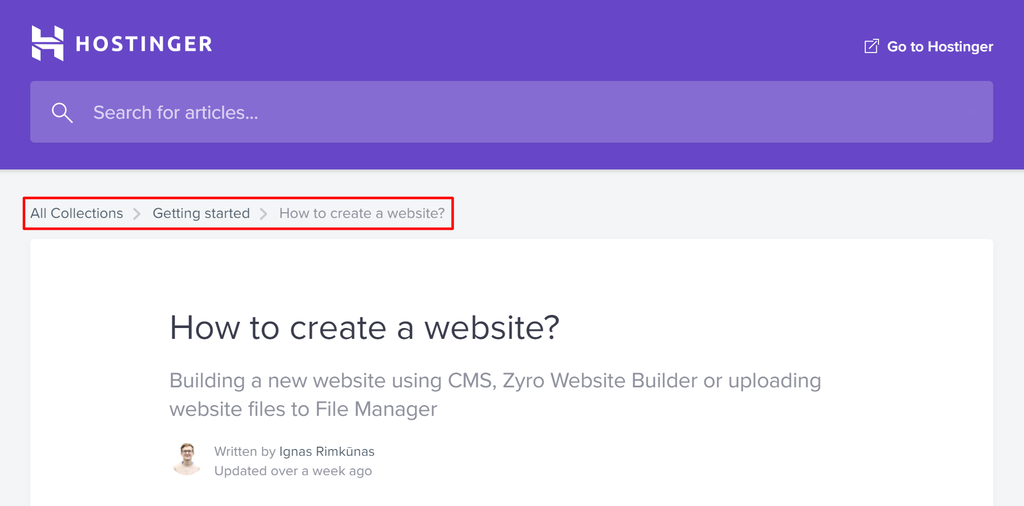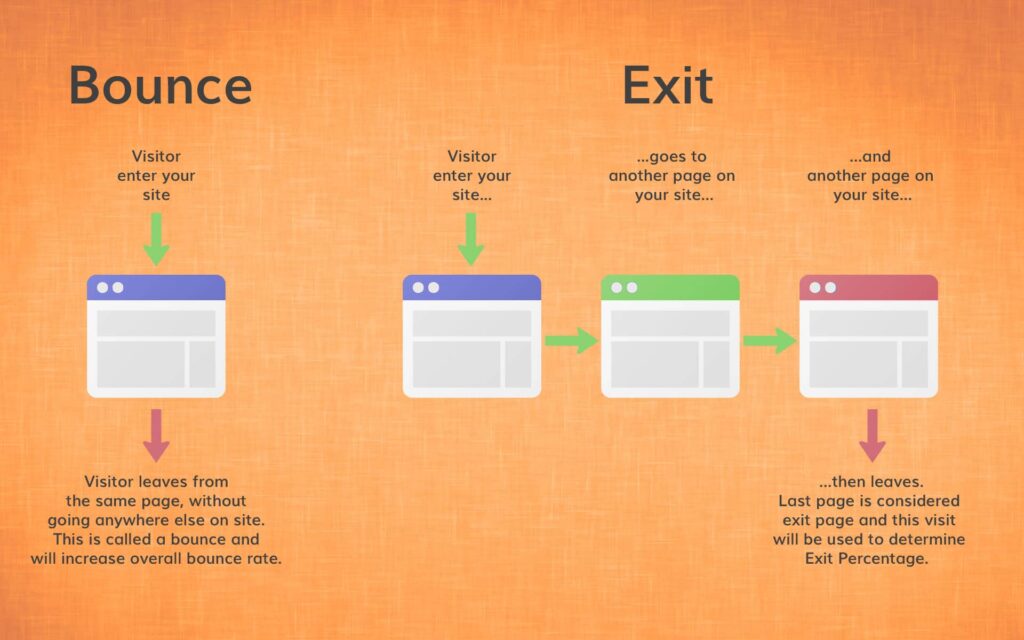Understand Some Points Of SEO
Let us today understand some points of SEO like bounce rate, breadcrumbs and favicon.
Understanding Favicon
In the vast universe of the internet, where every website strives to stand out, there exists a tiny yet mighty element that plays a significant role in a website’s identity—the favicon. You may have seen it countless times while browsing the web, but what exactly is a favicon?
What is a Favicon?
A favicon, short for “favorites icon,” is a small, square-shaped icon associated with a website. It appears in various places, notably next to the website’s name in browser tabs, bookmarks, and sometimes in search results. Typically, it measures 16×16 pixels, although higher resolution versions like 32×32 pixels are also commonly used.
The Origin Story
Back in the early days of the web, browsers introduced the concept of bookmarks to help users save and organize their favorite websites. To visually distinguish these bookmarks, the favicon was born. It initially served as a visual cue to help users recognize and differentiate between various websites when they saved them to their browser bookmarks.
Why Favicon Matters
1. Brand Identity and Recognition
Imagine the favicon as a miniaturized version of a brand’s logo. Just as a logo represents a brand visually, a favicon acts as a condensed symbol of the website or brand. Its presence reinforces brand recognition and helps users identify and remember a site amongst a sea of tabs.
2. Enhancing User Experience
In a browser crowded with tabs, the favicon aids in navigation. Users can quickly spot their desired website based on the unique favicon associated with it. This enhances user experience by reducing the time and effort needed to locate a specific site.
3. Establishing Credibility
A well-designed favicon contributes to the overall professionalism of a website. It signifies attention to detail and professionalism, which can positively influence how visitors perceive the site and the brand behind it.
4. SEO and Visibility
While not a direct ranking factor, a favicon indirectly contributes to a website’s visibility. It doesn’t boost SEO on its own, but it aids in making a website more recognizable, potentially encouraging users to click on it in search results.
Creating a Favicon
Crafting a favicon involves condensing a brand’s essence into a minuscule canvas. Designers often face the challenge of retaining clarity and visual appeal within the tiny dimensions.
Common Approaches:
- Logo Adaptation: Scaling down a brand logo while maintaining its core elements.
- Simplified Icons: Creating a simplified icon representing the brand or website.
- Initials or Symbols: Using initials, symbols, or unique shapes associated with the brand.
Technical Specifications:
Favicons are usually saved in the ICO (icon) file format for compatibility across various browsers. However, PNG, GIF, or SVG formats can also be used. The favicon file is then linked to the website using HTML code within the <head> section.
Evolving Role of Favicons
With advancements in web design and user experience, the role of favicons continues to evolve. Some websites experiment with animated favicons or use them to convey additional information, such as new message notifications or loading indicators.

Understanding Breadcrumbs: A Comprehensive Guide
Introduction to Breadcrumbs
In the vast landscape of website navigation, breadcrumbs play a pivotal role in enhancing user experience. They are like digital Hansel and Gretel breadcrumbs, guiding users through the intricate maze of web pages, offering clarity and ease of navigation. This comprehensive guide aims to delve into the depths of breadcrumbs: their types, benefits, implementation best practices, and their impact on user interaction and SEO.
What Are Breadcrumbs?
Breadcrumbs are a hierarchical navigation aid displayed on web pages, showing the user’s current location relative to the homepage. They typically appear as a series of links, usually at the top of a page, forming a trail of visited pages. The term “breadcrumbs” is an analogy borrowed from the Hansel and Gretel fairytale, where the characters used breadcrumbs to find their way back home.
Types of Breadcrumbs
Breadcrumbs can be categorized into three main types: Location-based, Path-based, and Attribute-based. Location-based breadcrumbs display the user’s current location within the site’s hierarchy. Path-based breadcrumbs show the actual path taken to arrive at the current page. Attribute-based breadcrumbs offer additional information about the current page, like date or category.
Benefits of Using Breadcrumbs
Implementing breadcrumbs brings various benefits to both users and website owners. For users, breadcrumbs offer improved navigation, allowing them to understand the site structure and easily backtrack. They reduce bounce rates by providing clearer paths, enhancing user engagement and satisfaction. For website owners, breadcrumbs contribute to better SEO by providing search engines with a clearer understanding of site structure.
Best Practices for Implementing Breadcrumbs
To maximize the effectiveness of breadcrumbs, certain best practices should be followed. Ensuring visibility, using a clear and consistent hierarchy, making them responsive for different devices, and incorporating proper markup for SEO optimization are some essential practices to consider.
Impact of Breadcrumbs on User Experience and SEO
The influence of breadcrumbs on user experience is profound. They streamline navigation, reduce confusion, and enhance user satisfaction, ultimately contributing to longer browsing sessions and increased page views. From an SEO standpoint, breadcrumbs offer search engines additional context about a website’s structure and hierarchy, potentially improving search rankings.

Understanding Bounce Rate in SEO: A Complete Guide
Introduction
In the dynamic landscape of Search Engine Optimization (SEO), bounce rate stands as a crucial metric. It’s more than just a number; it’s a reflection of user engagement and website performance. This comprehensive guide aims to delve into the depths of bounce rate: its definition, significance, factors affecting it, strategies to improve it, and its impact on SEO efforts.
What is Bounce Rate?
Bounce rate signifies the percentage of visitors who enter a website and leave without engaging further or navigating to other pages within the site. Essentially, it measures single-page sessions, where a user exits without interacting beyond the entry page. For instance, if a user lands on a webpage and leaves without clicking on any other internal links, it contributes to the bounce rate.
Significance of Bounce Rate in SEO
Understanding bounce rate is pivotal in deciphering user behavior. A high bounce rate often indicates a lack of engagement or relevance, potentially signaling issues with content, site usability, or visitor expectations not being met. From an SEO perspective, a high bounce rate might negatively impact rankings, as search engines interpret it as dissatisfaction with the content or website.
Factors Influencing Bounce Rate
Numerous factors contribute to bounce rate, ranging from website design, content quality, page load speed, mobile responsiveness, to user intent alignment. Irrelevant or poorly structured content, intrusive pop-ups, confusing navigation, and slow-loading pages are common culprits behind high bounce rates.
Strategies to Reduce Bounce Rate
Implementing effective strategies to lower bounce rates is crucial for improving user engagement and SEO performance. Crafting compelling, relevant, and easily digestible content, optimizing page load speeds, enhancing website navigation, using engaging visuals, employing clear call-to-actions (CTAs), and ensuring mobile responsiveness are some effective strategies to mitigate bounce rates.
Bounce Rate and SEO Impact
While bounce rate alone might not directly influence search engine rankings, it is interconnected with various SEO factors. High bounce rates can indirectly affect rankings by signaling poor user experience, leading to reduced dwell time and fewer page views. However, it’s essential to consider bounce rate in conjunction with other metrics to gauge its true impact on SEO.

Bounce Rate vs Exit Rate
In the ever-evolving landscape of online analytics, two metrics play a pivotal role in understanding user behavior: bounce rate and exit rate. While both metrics shed light on user engagement, they have distinct nuances and implications for website owners and marketers. In this comprehensive guide, we will delve into the definitions, differences, and strategies to interpret and improve bounce rate and exit rate.
Demystifying Bounce Rate :
Definition and Calculation:
Bounce rate represents the percentage of visitors who navigate away from a website after viewing only one page. It is a critical metric for assessing the initial engagement of users with your content. The formula is simple: Bounce Rate = (Number of Single-page Sessions) / (Total Sessions).
Interpretation:
A high bounce rate may indicate that visitors are not finding what they expected or that the landing page fails to capture their interest. However, it’s essential to consider the type of content and the purpose of the page, as certain pages like blogs or articles might naturally have higher bounce rates.
Impact on SEO and User Experience:
Search engines often interpret a high bounce rate as a signal that a webpage may not be providing relevant or engaging content. Therefore, managing and optimizing bounce rate is crucial for maintaining a favorable position in search engine results.
Deciphering Exit Rate :
Definition and Calculation:
Exit rate, on the other hand, indicates the percentage of users who leave a specific page after visiting multiple pages within the same session. The formula is calculated as Exit Rate = (Number of Exits from Page) / (Number of Pageviews).
Interpretation:
Exit rate provides insights into which pages on your website are the last pages users see before leaving. It helps identify potential bottlenecks or issues in the user journey. High exit rates on specific pages may indicate usability problems or a lack of relevant information.
Relation to Bounce Rate:
Unlike bounce rate, exit rate considers users who have interacted with multiple pages before leaving. While high exit rates are expected on certain pages, a substantial increase across multiple pages may warrant further investigation into the overall website flow.
Strategies to Improve User Engagement :
Addressing High Bounce Rates:
- Content Relevance: Ensure that your content aligns with users’ expectations and search intent.
- Page Load Speed: Optimize page load times to enhance user experience.
- Clear Call-to-Action: Provide clear next steps for users to explore additional content or engage with your website.
Mitigating High Exit Rates:
- User Flow Analysis: Use tools like Google Analytics to understand user journeys and identify common exit points.
- Optimizing Exit Pages: Enhance the content and calls-to-action on pages with high exit rates to encourage further explorati


Wow amazing blog layout How long have you been blogging for you made blogging look easy The overall look of your web site is magnificent as well as the content
Thank you